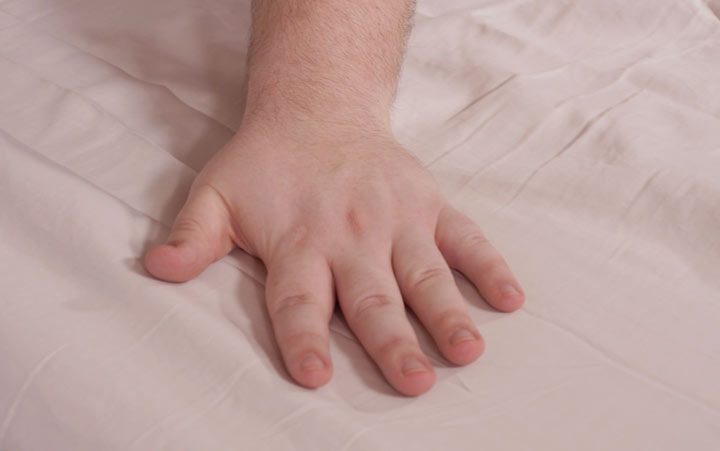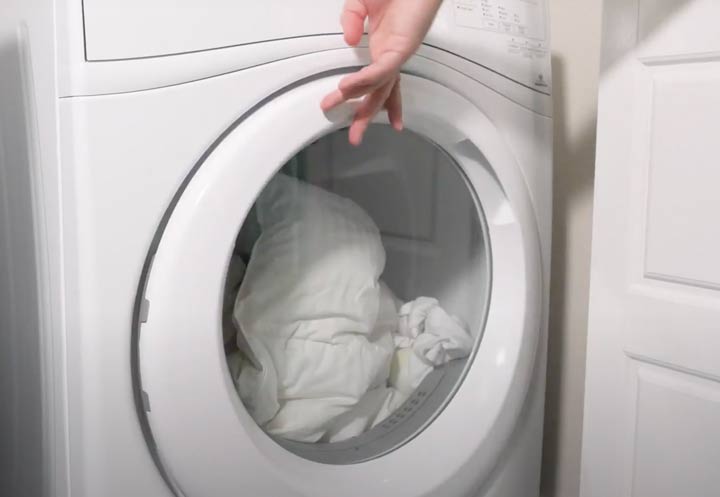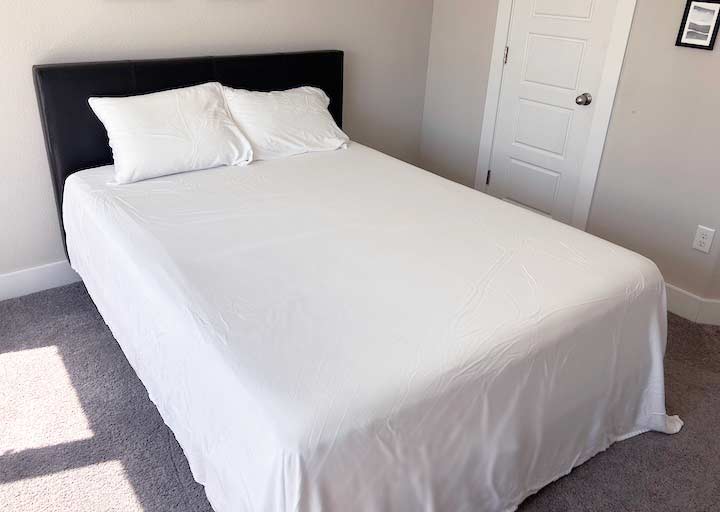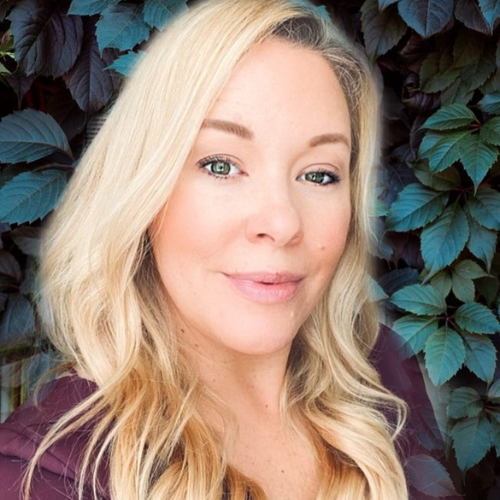If you’ve been sleeping on your favorite set of sheets for some time, you may notice they’re showing their age. Even the highest quality sheets can transform from silky smooth to pebbly and pilling with enough wear or incorrect care.
What is Pilling?
Pilling occurs when fibers break down and tangle, giving the fabric a rough feel and creating little fuzz balls on top of sheets or clothing. Not only does pilling make your sheets look worn and ragged, but it can also add an unpleasant texture to the surface of your sheets that may disrupt your ability to get deep, restful sleep.

Common Materials Affected
Pilling can happen to any fabric, but some fibers are more likely to pill than others. Sheets are made up of different fibers woven together.
Fabrics made from multi-ply short fibers are more likely to pill; those made of longer, single-ply fibers, such as Egyptian cotton or bamboo, are less likely to break down.
In many cases, a higher thread count can indicate a material less likely to pill over time. Thread count measures the number of threads woven into a square inch of material, so a higher thread count can mean a tighter weave and less risk of pilling.
Cotton
Not all cotton sheets are created equal. The longer the cotton fiber, the softer, more durable, and pill-resistant the resulting material can be. Long-staple cotton fibers like Pima and Egyptian cotton will last longer and resist pilling more than their short-staple or blended counterparts.
Bamboo
Bamboo sheets consist of extremely long fibers. Like cotton, bamboo is a natural fiber. Bamboo sheets are often tightly woven with a higher thread count. Bamboo sheets’ longer, tightly woven threads can be more pill-resistant than other sheet materials.
Microfiber
Microfiber consists of very fine, tightly woven synthetic fibers. Microfiber is very durable and more pill-resistant than other sheet materials. Just like cotton sheets, the quality of the sheet matters. Good-quality microfiber sheets are more durable, while poor-quality microfiber is more likely to tear from wear and improper care.
Flannel
Flannel sheets are made from loosely woven fibers. Flannel sheets can be made from brushed cotton, wool, blended or synthetic fibers. Brushing the threads, a process called “napping,” gives flannel its desired velvety-soft feel. The loose weave in flannel sheets can make them prone to pilling if not properly cared for.
Why Do Sheets Pill?
The main reason sheets pill is friction, which breaks down fibers. Friction can be caused by improperly washing and drying your sheets or even tossing and turning in your bed as you sleep. Other factors contributing to pilling include:
Low-Quality Fabric
Sheets made from low-quality materials are more likely to pill faster than high-quality sheets, which typically consist of multi-ply or short-staple fibers.
High Washing Temperature

Following the manufacturer’s care instructions for washing your sheets is important. Many sheets can remain in good shape when washed with cool water and gentle detergents and dried at a low temperature. Washing and drying your sheets at hot temperatures can increase the breakdown of fibers from friction. Harsh detergents can also accelerate the fiber breakdown that leads to pilling.
Friction and Wear
If you’ve ever noticed that your sheets begin to pill towards the bottom of your bed before anywhere else, it may be from rough skin on your feet and heels. Anything that adds additional friction or wear can increase the likelihood of pilling. If you find yourself tossing and turning repeatedly throughout the night, consider a mattress topper or new pillow to help you sleep more comfortably.
How to Fix Pilling On Your Sheets
The first sign of pilling doesn’t necessarily mean you need to run out and buy new bedding. You can fix pilling on your sheets.
Use a Razor and Lint Roller
The small balls of fuzz on the surface of your sheets can be removed with a razor or lint roller. If you are using a razor, gently run it downward over the pilling sections. Be careful not to cut into the sheets themselves. For light pilling, a lint roller may help remove the fuzz balls.
Cut Off the Pills With Scissors
A small pair of scissors may help you cut the pills off sheets. Be very careful if you use this method for removing pilling to avoid cutting holes in your sheets.
Use a Battery-Operated Fuzz Remover
A battery-operated fuzz remover, also known as a fabric shaver, can help you shave off pills without worrying about damaging sheets. The handheld device works like an electric razor, pulling the pills inside to be cut by blades and protecting your sheets from damage.
How to Prevent Pilling in Sheets
While no sheet is 100% pill-proof, many are more resistant to pilling. With proper care, you can help prevent pilling in sheets.
Choose High-Quality Sheets
Higher-quality sheets can be more durable and pill-resistant. If you want a set of sheets that will be resistant to pilling, look for natural materials with longer, single-ply, tightly woven fibers.

Proper Washing and Drying
Following the manufacturer’s care instructions for how to wash your bed sheets can help resist pilling, maintain softness, and help your sheets last longer. Most sheets will benefit from gentle washing and drying at low temperatures.
Best Sheets to Avoid Pilling
Long-staple cotton and bamboo sheet sets can be soft, durable and resist pilling, if cared for properly. Some of the best materials for bed sheets include:
Egyptian Cotton Sheets
Egyptian cotton is finer and longer than other types, resulting in a more durable sheet. Look for a thread count between 400-700.
Pima Cotton Sheets
Pima cotton is another type of cotton that is longer and more pill-resistant than other cotton fibers. Look for a thread count of 300-600.
Percale Sheets
Percale describes a weave pattern that results in a more durable sheet. Look for a thread count of 200-300.
Linen Sheets
Linen sheets feature a longer, loosely woven fiber, which is more resistant to pilling. Look for a thread count of 80-150 for maximum breathability and durability.
Bamboo Sheets
Bamboo sheets are made from long fibers that resist pilling. Look for a thread count of around 300.
When Should I Look for New Sheets?
Pilling could be a sign it’s time to buy new sheets. In general, sheets should be replaced every two to three years or every 100 washes. Excessive pilling, rips or tears, stains or odors could indicate that it’s time to replace your sheets.
What Should I Look for When Buying New Sheets?
There are a number of factors to consider when it’s time to buy new sheets. Material, weave and thread count can all contribute to sheet quality, and your comfort preferences should be the biggest factor when buying new sheets.
High Thread Count
Thread count is generally an indicator of how tightly woven a sheet is, not a measurement of quality. However, there is a range of the best thread count for sheets—depending on the material—if you’re seeking durability and comfort.
FAQs
What causes sheets to pill?
Friction breaks down sheet fibers, resulting in frayed ends and small fuzz balls known as “pilling.”
Do microfiber sheets pill?
They can, but they are less likely to than other materials. Microfiber sheets are tightly woven, and high-quality microfiber can be more resistant to pilling.
What sheets are best to avoid pilling?
The best sheets to resist pilling are those made from natural long-staple, tightly woven fibers.
Does washing sheets get rid of pilling?
Washing can contribute to pilling if not done correctly. The best way to remove pills from sheets is to shave them off with an electric fabric shaver or razor.

